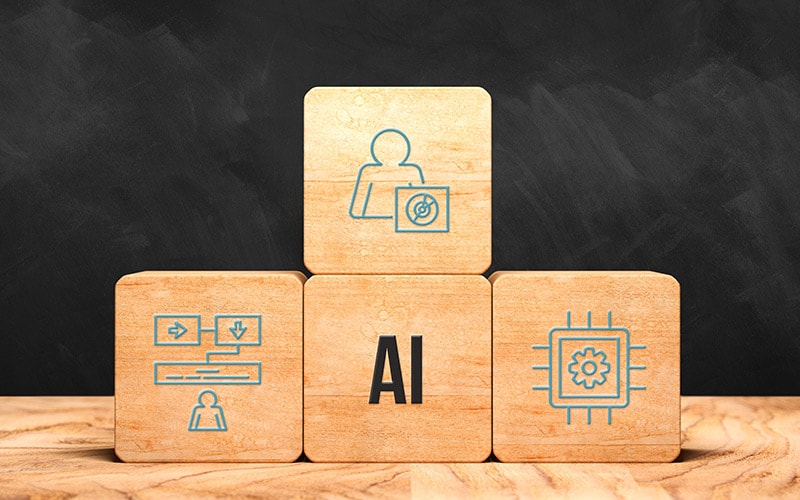Introduction
The relationship between services vendors and their clients is constantly evolving. Twenty years ago most of the work outsourced to vendors was transactional in nature, reflected by the initially popular staff augmentation sourcing model. As organisations matured, managed services became one of the leading strategic sourcing imperatives for companies around the globe in maintaining their market position and growing their customer base.
More recently, outsourcing is evolving from something businesses use to improve technology capability and process efficiency to a strategic competitive advantage. This has significantly altered the dynamics of the relationship between clients and sourcing partners in multi-vendor operating environments.
The Digital Age – Artificial Intelligence and Automation
While Artificial Intelligence (AI) and Automation is not an entirely new concept, it is fast becoming a mainstream presence with more and more organisations turning to machine intelligence to improve performance, drive efficiency and reduce operational costs.
As Automation significantly decreases the cost of delivery, vendor service offerings will be differentiated based more on strategic value than costs or technical IP. Now, the introduction of new technologies, means more efficient processes and robotic labour has allowed sourcing providers to move up the value chain into supporting operational and strategic functions. The emerging technologies also mean reduced barriers of entry, where an increasing number of native digital providers are competing with large global providers.
There will also be an increased number of smaller service providers entering the sourcing market due to lower barriers of entry, as well as shifts in demand for new service offerings from niche vendors. Service Integration and Management (SIAM) will apply to more and more client organisations to manage this distributed, multi-vendor environment. Extending from the traditional Service Integration (SI) offering, SIAM is where a strategic partner – or the client organisation - inserts a management function / layer over all service providers to manage multiple partnerships comprising hybrid ownership, co-located working environment and mutual risk/gain within vendor clusters. This provides client organisations with control and visibility and allows them to focus on the strategic and customer facing element of operations, with business and change agility becoming the common theme in effectively managing accelerated market disruptions.
How organisations navigate the next level of strategic sourcing partnerships will steer market positioning in an increasingly dynamic and volatile environment.
This paper focuses on the impact of AI and Automation on client and vendor or partner workforce models.
Shifting Staffing Models in an AI and Automation Driven Sourcing Environment
As organisations begin the journey of redefining their way of operating in a human-machine era, staffing models are also evolving to adapt to this shift towards new technologies, collaboration and ways of working.
This marks an interesting period as organisations juggle human capability with current – and forecasted – machine capability. In the move to building digital capability within the organisation and attracting the right talent, optimising the resourcing requirements to manage operational needs in a constantly shifting environment is a challenge many companies face.
What this means is that staffing models can no longer rely on pure labor arbitrage in favour of a sourcing vendor or strategic partner at a constant volume, but move in a transient and scalable manner between the strategic partner and the client organisation to meet shifting demands and capability requirements. Workforce rebalancing is a key factor to consider in an AI and Automation driven sourcing environment, as the staffing model starts to revolve around common business goals – where vendor and strategic partner resources will work closely with business leaders, users and outcomes – resulting in a change to the overall ways of working with the client and other partners.
In addition to the outcome driven model in a mature managed services environment, in AI and automation it will not be limited to the IT delivery space. Client and vendors will move towards“X as a service model”, whether it be platform as a service, software as a service, with the focus on business outcomes.
As the relationship moves up from transactional and Service Level Agreements (SLAs) to shared proprietary goals and joint IP, the sourcing structure and staffing model also becomes more transient and scalable. The emphasis will be on supporting the client organisation in achieving their business goals in a partnership journey, with the resourcing model and expertise between multiple vendors and the client organisation.
Figure 1. Evolution of Sourcing Staffing Models
The diagram above depicts the sourcing agility that is required as vendors become strategic partners in supporting client organisations to plan and identify critical elements in their AI and automation journey. This will see strategic vendor employees transferring to client organisations, client employees seconded to vendor organisations, as well as strategic partners attracting the right talent on behalf of the client organisation. Staffing models will range from singular strategic resources, to shorter term Proof of Concept (POC) initiatives with a small team, to larger multi-year digital transformations impacting entire lines of business.
Several key areas of consideration are outlined below in further detail
1. Flatter Organisation Structure with Cross-functional Teams
Automation is designed to remove targeted human labour and perform predictive, planned tasks with greater efficiency, improved accuracy and lower costs. This will flatten organisational structures and eliminate hierarchies as highly specialised functions and domain verticals will no longer be required. Cross-functional teams will also start to reshape around customer journeys and value chains, operating in a fluid ecosystem that is transient and collaborative in nature, bearing end-to-end visibility and ownership of outputs than the traditional linear reporting structure. These new ways of working are aligned with Agile delivery methods and support the Service Integration and Management model.
Culturally this will be a different working environment as more collaboration between different sourcing partners are requested by the client organisation. Resources may be co-located or in geographically dispersed locations, working with multiple global time zones.
2. Partnership Alliances in a Multi-Vendor Operating Environment
Automation creates an environment where multiple vendors and strategic partners need to co-exist and co-deliver. Networks of scalable, cross-functional teams are required to adequately support the changing consumer demand in a vendor agnostic environment.
Client organisations will shift their attention from managing single or multiple vendor performance to achieving common goals. The goals are based on client benefits across organisational and sourcing partner boundaries. In the example of vendor managers (VMs), core responsibilities change from only managing outcomes with a single or a small number of vendors to managing relationships with a selected number of strategic partners.
Shared metrics and measures of success between the client organisation and sourcing partner(s) become the foundation and basis of achieving success. In the Asia Pacific, adoption of this model can be seen through a large Telecommunications organisation in a joint venture initiative with multiple partners. The governance forums are structured in such a way that multiple partners are accountable for a single outcome, with highly transparent financial and margins as points of discussion.
3. Data Governance and Decision Making
AI’s ability to synthesise, analyse, interpret and generate vast amounts of data to make predictive decisions in relation to service delivery will transform traditional governance forums and delivery level tracking.
Automation and AI will change traditional sourcing decision making structures from managing performance and delivery to managing exceptions. It will no longer be about managing day to day operational items and siloed SLAs, but overall end customer satisfaction as the ultimate objective for all parties involved.
The strategic importance of data also leads to considerations for an enterprise-wide data governance model. The decision on whether data governance responsibilities will reside with the vendor manager or the strategic partner will become a key input into the overall technology architecture.
4. Evolving Metrics and Benchmarks for Leaders, Sourcing Partners and Client Organisations
The expectation on strategic partners to support client organisation through periods of constant change, as well as upskilling client managers and leaders in effectively leading change, may become a pivotal differentiator. Adaptive change competencies around cultural and behavioural change, setting strategic directions as well as managing conflict will take precedence over technical change competencies in managing well defined set of change requirements as a key skill strategic partners will need to provide.
As AI and Automation provide a consistently predictive delivery outcome, joint accountability and shared success metrics between client organisations and vendor partner is key to success, as is the transparency of decision making and reward mechanisms. Identifying the common goal and working collaboratively in a competitive landscape requires maturity from both the client organisation, partners and service providers underpinned by emphasis on culture and ways of working with succinct measures of benefits realised.
The Future with Humans and Machines
It will be some time before AI and Automation can completely replace human labour in delivering products and services to a human market. The immediate impact of AI is not the elimination of entire jobs or occupations, but rather the automation of certain functions within jobs. The likely outcome of this change will be that organisations reassemble work into different types of jobs enhancing the scope and capability of the human element at each step.
Furthermore, AI and Automation is likely to lead to a requirement for more human labour than less in the interim. The roles and resources required to design and implement automated services and set up machine intelligence will likely create a short-term spike in digital and niche skilled resources.
In the long term, however, automation will result in a significant reduction in headcount at every level of both client and sourcing partner organisations. This creates opportunities for client organisations to free up cost and human efforts and refocus on how they combine people, vendors and technology to better meet the needs of their customers.
From a leadership perspective, the rate of AI and Automation accelerates the urgency and need for leaders to move away from the command-and-control era – when holding information close was a source of power, and when information moved in only one direction – to a highly collaborative, empowering and automated delivery model.
While organisations with a decentralised span of control or mature Agile organisations may have a head start on more traditional hierarchy structures – as a matrix reporting line and the Agile delivery method already embeds some of those changes in leadership behaviour and ways of working – the people and business challenge in embracing a future with AI and Automation is relevant to all organisations.
Conclusion
The deployment of AI and Automation is no longer a speculation, but a reality in today’s world. The prevalence of automated systems in the workplace is engineering a quantum leap in human productivity. As market leaders begin to rely on automated technologies, expansion of current skillsets, performance and market share will profoundly change client and vendor relationships in the sourcing landscape.
Vendors will no longer focus on human-centric service delivery issues but rather on data-centric analysis; identifying risks and opportunities for innovation and the next wave of disruption. Contractual obligations will become standardised and constructed to incentivise information sharing and opportunities for innovation and mutual revenue growth.
Capitalising effectively on digital trends and opportunities involves a high degree of coordination within a company and across vendor and partner organisations. Digital disruption is rarely a one-time event. As disruptive pressures intensify for everybody, the need for agility within organisations and across their supplier network will become increasingly urgent.
The key to doing this will be developing the ability to identify the right balance of people, culture and technology, running and evaluating pilot programs and calibrating how much change to introduce and how quickly. Organisations will need to develop techniques to overcome cultural barriers and quickly incorporate lessons learned. They will need to master skills in partnering and collaboration to leverage expertise and mitigate risk. Client leaders’ ability to effective adapt and lead through change is pivotal to the success of an organisation and its AI strategy. While technology plays an important role, it is ultimately the people retained in client organisations that will determine the success or otherwise of technology driven innovations.
Organisations must ensure they are ready to get the most benefit out of machine intelligence, with strategies and plans in place to appropriately reskill employees for the digital era. The key risk is not that automation will replace much of what humans do, but that leaders and organisations will continue holding on to outdated methods of work and partnership, therefore missing the opportunities automated technologies present to collaborate within and across organisational boundaries – creating communities of people with a shared purpose in leveraging technology for mutual benefit.




